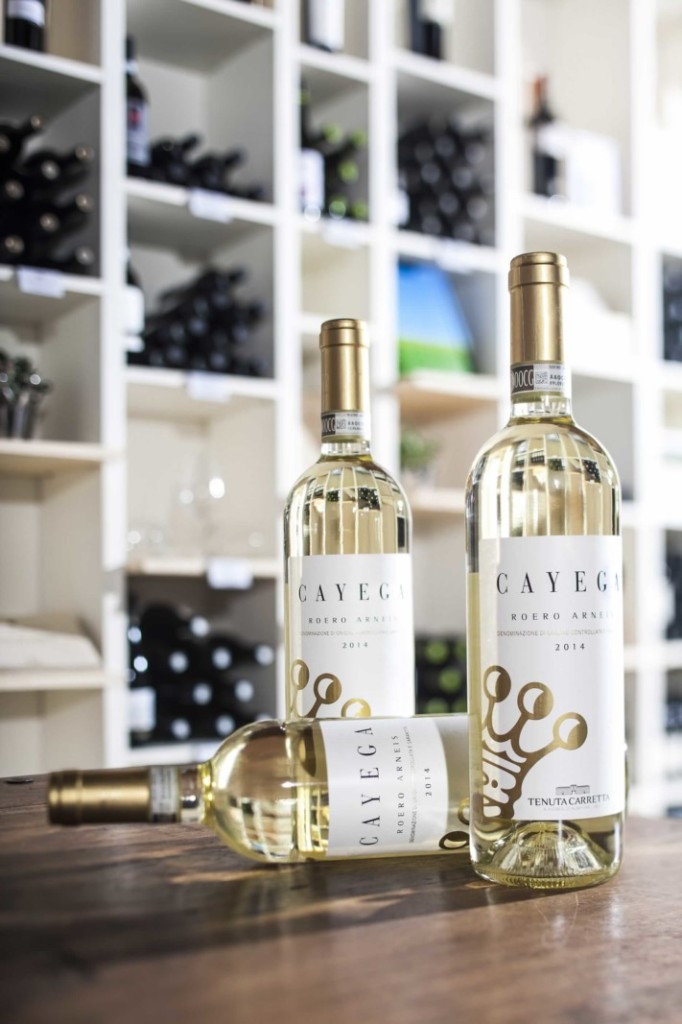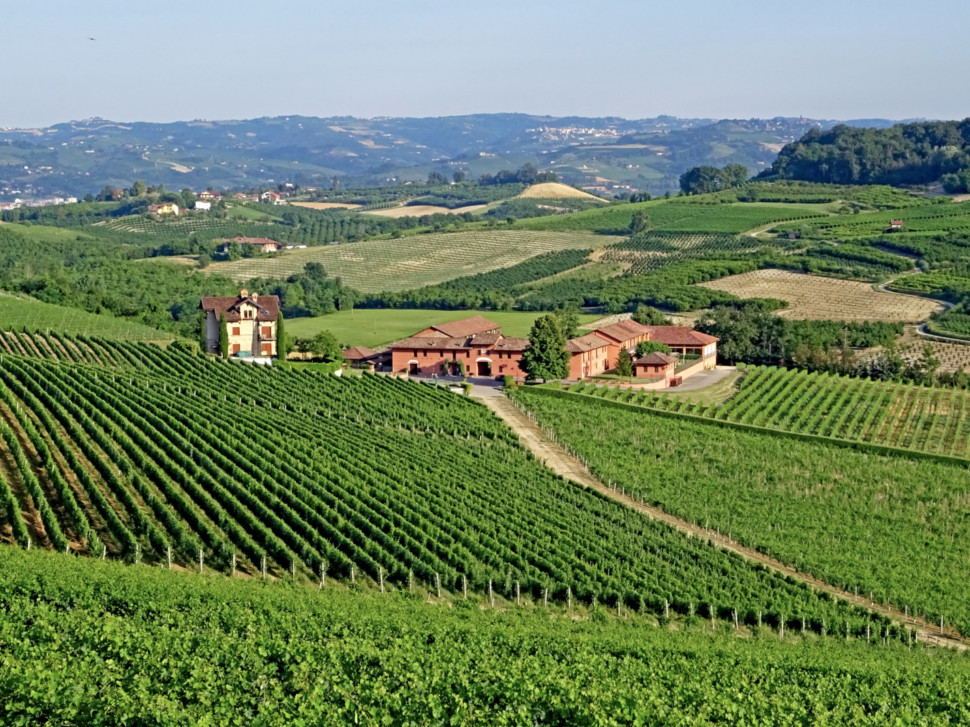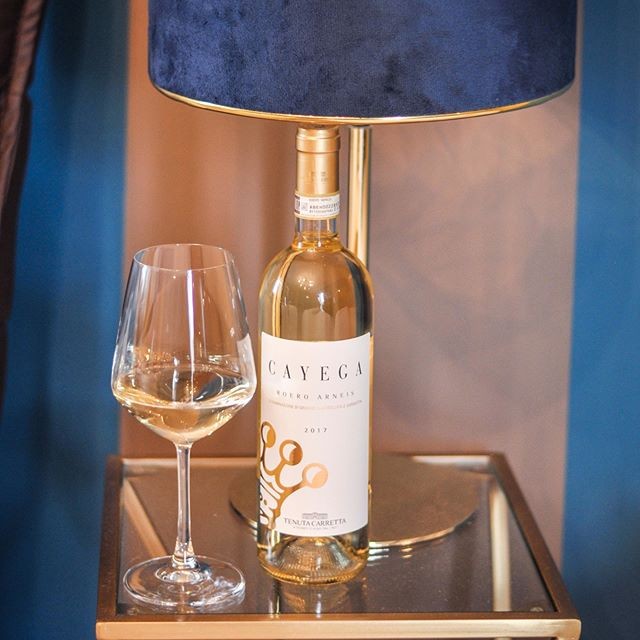14 October 2019
In a land awash with red wine, Arneis often times gets lost amongst the vines. However, it is one of Piedmont’s oldest native grapes, and a lot more “pop” than its darker brethren.
Tenuta Carretta’s Cayega Roero Arneis DOCG is a popular wine in the region. The crisp white wine is young and modern, with a profile that transcends any meal or occasion. But don’t let labels deceive you; this is a wine with a 550-year history.
Arneis is a native white grape varietal from Piedmont. Its exact place of origin is still a bit of mystery, but wine historians place it near to where it currently thrives best: the Roero hills. This ochre-yellow land that lays to the northwest of the Langhe, on the other side of the Tanaro river, is the undisputed territory for Arneis. The sandy and more chalky soils give the final wine more acidity and structure, transforming it from a fragrant but flat wine, into a bright, floral and dry wine. Under Italian law, only Arneis produced in Roero can carry a DOCG label while just across the river it is considered a DOC. What a difference fifteen kilometres can make!
 Cayega Roero Arneis DOCG, Tenuta Carretta, Piedmont.
Cayega Roero Arneis DOCG, Tenuta Carretta, Piedmont.
This is great news for Tenuta Carretta, the historic winery that calls Piobesi d’Alba, in Roero, home. The winery is one of a few to produce all of Piedmont’s native varieties. However, they have become somewhat of an icon for Roero Arneis DOCG. Their Cayega Roero Arneis DOCG label is adored by many and has developed into one of the only flagship white wine labels for any major winery in the region.
What is more, is that both the grape and the winery share a similar 550-year story. Tenuta Carretta can trace their history back to 1467 when a nobleman owned the land and agreed to have it worked by locals to produce wine. While the exact style of wine is unknown, there is a reason to believe that it was a blend of Piedmont’s oldest grapes: Nebbiolo and Arneis.
 Vineyards surrounding the winery, Tenuta Carretta, Piedmont.
Vineyards surrounding the winery, Tenuta Carretta, Piedmont.
Before the mid-20th century, Arneis was often grown in between every few rows of Nebbiolo and the two were harvested and blended together. This was due to one specific characteristic of the Arneis grape: its sweetness. It would attract critters, bees, and birds who would nibble on the sweet berries and leave the more profitable Nebbiolo alone. And in the same line of thinking, it would be blended with Nebbiolo to tamper down its infamous tannins and acidity.
It is unsure for how long this practice had been taking place, but many believe that Arneis (as well as Nebbiolo) have been around since the mid-15th century. Coincidentally, the same period when Tenuta Carretta was first making wine.
 Under today’s disciplinary standards, these two grapes are never blended together in a commercial wine and since Arneis has found its home in Roero and Nebbiolo across the river, it is for the better. Tenuta Carretta’s Cayega Roero Arneis DOCG natural sweetness is balanced by subtle acidity and characteristic notes of pear, white peach and flint stone, rendering it into an enjoyable dry white wine. It is a “pop” wine with an old soul.
Under today’s disciplinary standards, these two grapes are never blended together in a commercial wine and since Arneis has found its home in Roero and Nebbiolo across the river, it is for the better. Tenuta Carretta’s Cayega Roero Arneis DOCG natural sweetness is balanced by subtle acidity and characteristic notes of pear, white peach and flint stone, rendering it into an enjoyable dry white wine. It is a “pop” wine with an old soul.
Enjoy a guided vertical tasting of Cayega Roero Arneis DOCG at Tenuta Carretta with The Grand Wine Tour.
